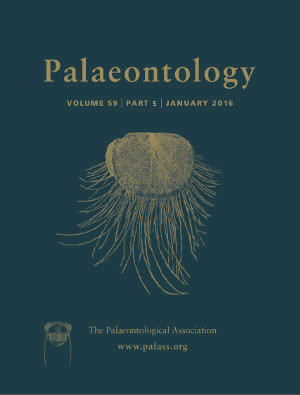Reg. Charity No. 1168330

It is widely accepted that the effects of global sea‐level changes at the transition from the Devonian to the Carboniferous are recorded in deposits on the shelf of northern Gondwana. These latest Devonian strata had been thought to be poor in fossils due to the Hangenberg mass extinction. In the Ma'der (eastern Anti‐Atlas), however, the Hangenberg Black Shale claystones (latest Famennian) are rich in exceptionally preserved fossils displaying the remains of non‐mineralized structures. The diversity in animal species of these strata is, however, low. Remarkably, the organic‐rich claystones have yielded abundant remains of Ammonoidea preserved with their jaws, both in situ and isolated. This is important because previously, the jaws of only one of the main Devonian ammonoid clades had been found (Frasnian Gephuroceratina). Here, we describe four types of jaws of which two could be assigned confidently to the Order Clymeniida and to the Suborder Tornoceratina. These findings imply that chitinous normal‐type jaws were likely to have already been present at the origin of the whole clade Ammonoidea, i.e. in the early Emsian (or earlier). Vertebrate jaws evolved prior to the Early Devonian origin of ammonoids. The temporal succession of evolutionary events suggests that it could have been the indirect positive selection pressure towards strong (and thus preservable) jaws since defensive structures of potential prey animals would otherwise have made them inaccessible to jawless predators in the course of the mid‐Palaeozoic marine revolution. In this respect, our findings reflect the macroecological changes that occurred in the Devonian. [Correction added on 28 July 2016 after first online publication: In the Abstract, the sentence “Vertebrate jaws probably … in the Early Devonian” was amended]